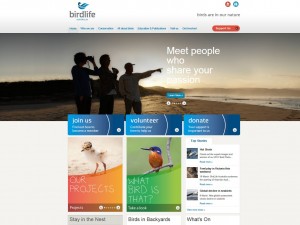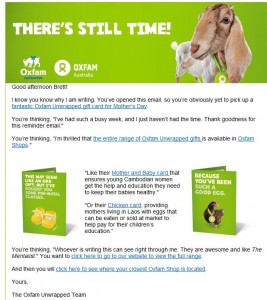Brett recently presented to 50 or so marketers and recruiters in the world of foster care. Convincing people to let a child into their lives is no small marketing task. He started by talking of the marketing funnel which goes something like this…
The funnel is a much-used metaphor for the sales process and it’s an equally useful way to think of your marketing options. Let us explain:
Whether you are selling a car or signing someone on as a donor, supporter or client it takes a while to move the prospect from being even vaguely aware of you to signing on the proverbial dotted line. It’s a process.
As the prospect gets closer to signing he is moving through the metaphorical funnel.
The funnel is an appropriate device as while you may get lots of people at the start of the process only so many come out the end. Also; you can’t get to the end of the funnel without entering it at the top. Of course the better salesperson or marketer you are, the more people you convert from casual browsers (top of funnel) to supporters (end of funnel). It’s more complicated for humans than for water.
Your goal as salesperson or communications person is to get people into the top of the funnel in the first place and then move them through the funnel as it gets narrower to the very end. Different marketing and communications options are suited to different stages in a prospect’s travel through the funnel.
If you want to get anyone at all to the end of the funnel you need to fill the top of the funnel with the maximum number of people regardless of their motivation. You need to reach lots of people who have never heard about you or your cause.
From a communications perspective this means the big, broad marketing channels such as advertising but paid mainstream advertising is a luxury few of us can afford. Even if we could afford it it is no guarantee of success. Ask General Motors.
For the car salesperson, the slick TV advertisement is just the top of the funnel – hopefully enough to inspire some warm bodies through the showroom door. But that’s all. Then the salesperson has to ‘encourage’ the prospect through the funnel – test drives, brochures, follow-up calls, second test drives, price negotiation, trade-in valuations and so on. Maybe one in 20 prospects gets to the pointy end of the funnel.
So what can we use instead of advertising to act as a top-of-funnel marketing tactic; one aimed to maximise exposure to newbies and reignite people who half-recall us? Media coverage. After all, it is why we consume media in the first place. Media reaches new people in a credible and influential way and is far more affordable than advertising. Media is at the top of your funnel and should be prioritised as such. A presence at public events also offers broad exposure, though usually on a smaller scale.
What next? Well how are most prospects who have seen you in the media going to acquaint themselves with you? Website. This is true of prospective donors, employees, volunteers, referrers or clients. The website is vital and high in the funnel and should be prioritised as such.
Then what? Well perhaps it’s the – wait for it – telephone. Let’s face it eventually most of us have to make a call to transact many things – swapping energy providers, booking our first appointment with the chiropractor, enquiring about the upcoming volunteer info night, seeing if our son might be eligible for reading assistance. Dare we say it – many telephone experiences with nonprofits leave much to be desired. Calls go unanswered, messages go unreturned and it all goes into the ether as few nonprofits track conversions from incoming calls to outcomes.
Then what? Perhaps it’s time for the written material to come into play. Note; by this stage the prospect is well into the funnel. Despite this, written materials – expensive, time consuming, decision-intensive and unmeasureable – get much fuss from nonprofits. Annual reports warrant external designers and much unpaid overtime from contributors. Brochures are (still) a big deal. Do they get people in the funnel? Nope.
Then what? Well to build real relationships you need time and constant attention p this takes the form of social media, eNewsletters and regular magazines / newsletters. This is where prospects (now connected to you) get to really know you and for what you stand. This is where you educate them on your issues (radicalise them, if you like) and take them through the funnel.
Then what? They are through the funnel and form your donors, supporters, clients, volunteers, staff members and more.
Summary: people must enter the funnel if they are to become something special to you. Some marketing and communications options are particularly suited to this (media and web) and should be prioritised accordingly.
See social media and regular communications as ways to build on existing relationships, getting people through the funnel. Social media is great for many things but is overrated as a way to meet new folk. It could be better seen as a way to stay in touch with your most passionate suppporters as they work through the funnel.
Few people are drawn into or through the funnel by brochures or annual reports. Many, many, many are blocked by poor telephone experiences.




